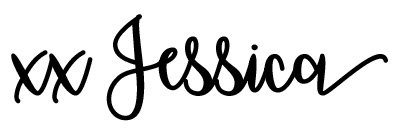In this Mini Class I show you how to paint a realistic dog nose in only one color, with black watercolor paint.
Values are Important for Realistic Painting
The key to making your dog nose look realistic and lifelike is the values – the combination of dark and light – and the contrast between them.
Making it look 3D, wet and shiny is easier than you think.
Paint in Layers to Achieve Depth and Realism
Build up the nose in layers to achieve realism
In watercolor painting layering is important, and in order to make the nose look as realistic and lifelike as possible I build up the colors in layers. Every layer adds its own dimension – the lighter layers are seen through the darker ones – and together they create a 3D look, making the dog come alive on the paper.
Start With the Lightest Color
I start with a very watery mix of black paint and map out the different areas of the nose. This will be my guide as I move forward in the painting process, and will help me keep track of where the lighter and darker areas are.
I don´t worry about getting any hard edges or overlapping dried watercolor areas. The nose will be painted darker in the layers to come so if it looks patchy now it will not be visible later on.

Stippling – a Useful Watercolor Technique for Texture
I leave the shiny parts unpainted and apply the paint in dots around them. Dog noses are textured, and by applying dots, a watercolor technique called stippling, I create a textured transition between the light sheen and the darker areas surrounding it. This will add to the illusion of realism.

Apply Darker Paint for Contrast
With my reference photo as support I slowly build up the shape and form of the nose by applying darker paint in layers.
I refine the shapes of the shiny areas by applying the paint in dots, and I also add curved lines around the nostrils, to refine the shape and structure of the nose. I paint the nostrils darker to create a 3D look, they extend into the nose and are darker the further in we look.

Finishing Touches
I soften the fur at the top part of the nose to create a soft transition between the nose and fur area. And after slightly darkening the upper right of the nose and adding some more dots of paint to create texture, the nose is finished, looking all wet, shiny and realistic.

The watercolor portrait of this beautiful black labrador with velvety fur and a shiny wet nose is now finished. The fur and nose are painted with one single, black color and you can see how the different values of the paint – darks and lights – are creating the realistic look.
This video is a fun, shortened lesson on how to paint a dog’s nose with detailed features in an easy-to-follow manner.
ART COMMUNITY – FULL LENGTH COURSES
This beautiful black Labrador is a detailed, full length tutorial which will be available in my amazing online membership program launching later this year – a supportive art community for artists of all skill levels that come together to paint realistic animals and wildlife in watercolor.
FROM STUCK TO UNSTOPPABLE
If you want to create lifelike paintings of animals and wildlife in watercolor, and capture their soul and personality on paper, but are tired of struggling, feeling stuck and overwhelmed, and would love to finally make your animal art dream come true, grow your skills, know-how and confidence – then this is the place for you!
Let me save you years of figuring it out on your own.
If I can do it so can you!
My vision is to embolden and empower as many artists as possible to embrace their passion and love for painting realistic animals and wildlife in watercolors.
With clear instructions, the right guidance and support I believe anyone can learn how to paint amazing realistic watercolors.
And I learned it the hard way, so you don´t have to ♥
Join the fun and let´s paint together! Sign up to the waitlist here:




